 |
| Path of solar eclipse, courtesy of NASA |
A total solar eclipse will move across North America during the afternoon of April 8th, tracking from southern Texas to northern Maine. In a total eclipse, the Moon passes between the Sun and Earth, completely blocking the face of the Sun. The sky will darken as if it were dawn or dusk.
The eclipse will be tracking across southern and southeast Illinois. In our area, locations south of an Effingham to Paris line will be part of the path of totality. Click here for an interactive map from NASA. The length of totality is shown in orange; it ranges from around 90-120 seconds near I-70, to 4 minutes around Lawrenceville.
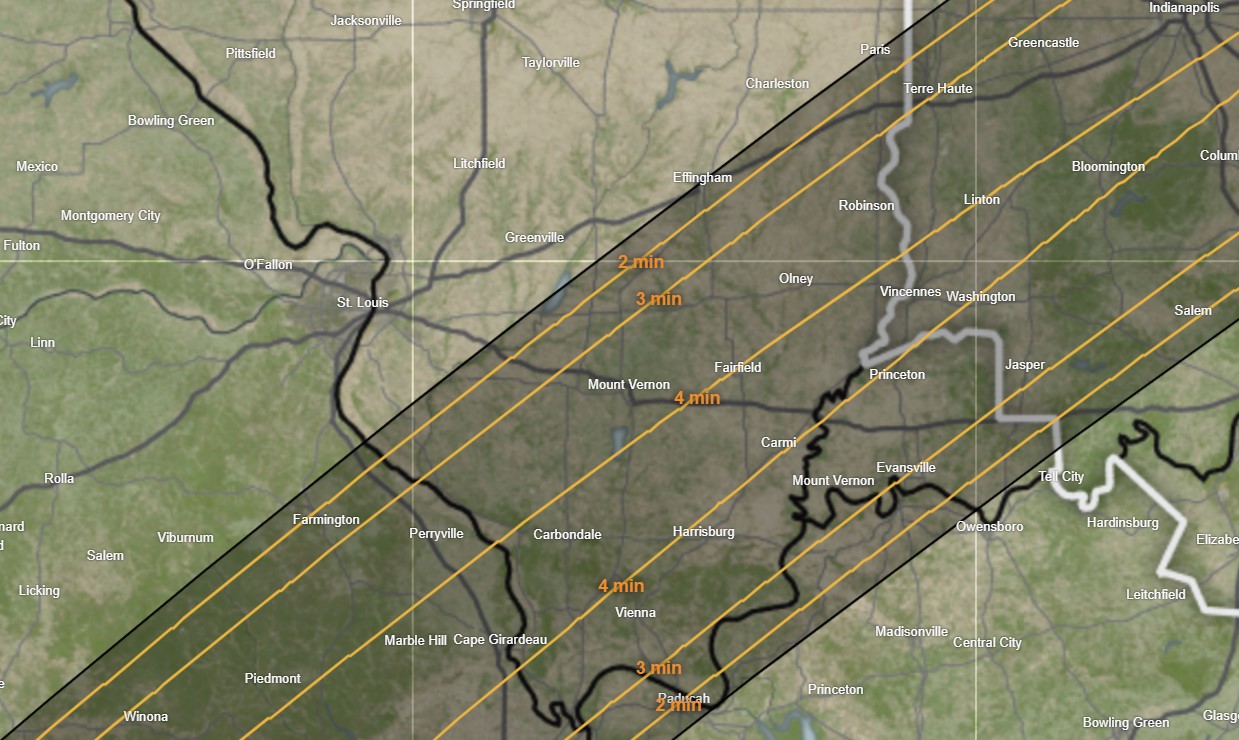
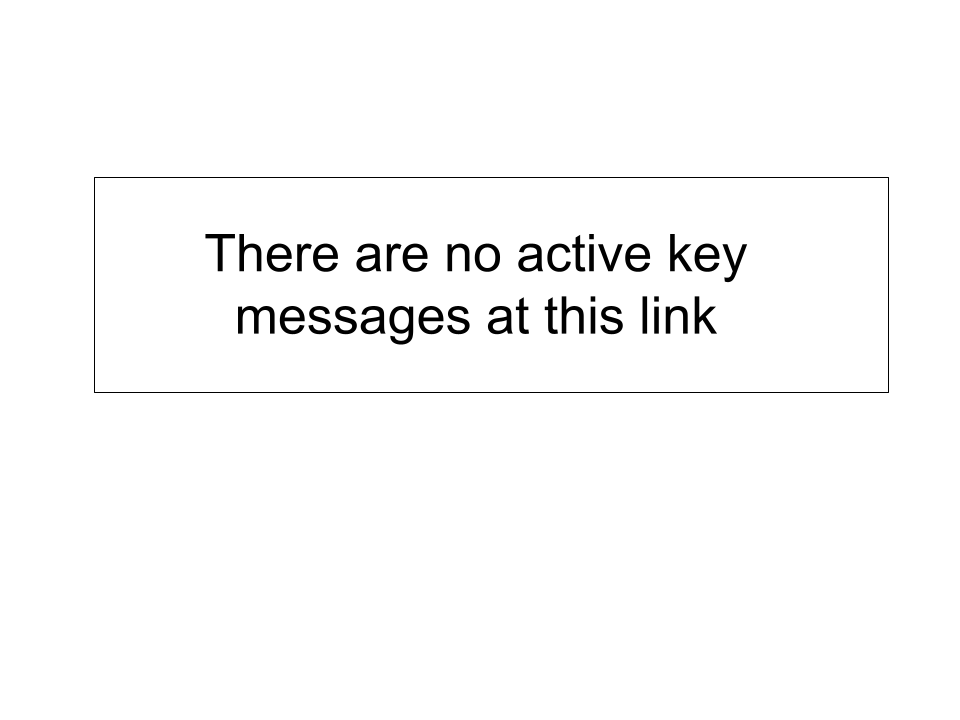
For the forecast for a specific location, visit https://www.weather.gov/forecastpoints and enter your city/state in the box above the map. The Hourly Table on the page will contain a line labeled "Sky Cover", shown as a percentage. The blue shaded boxes show the highest chances of good viewing conditions!
An analysis of cloud cover climatology for the first half of April, using data from 1979 to 2022, shows that the typical April 8th in central and southeast Illinois averages about 60-70% afternoon cloud cover. Given that we have been in an El Nino pattern, a similar analysis shows a bit higher percentage of clouds, especially north of I-70.
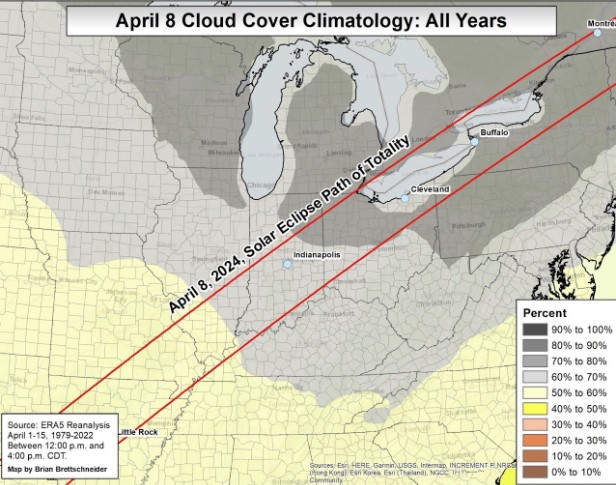 |
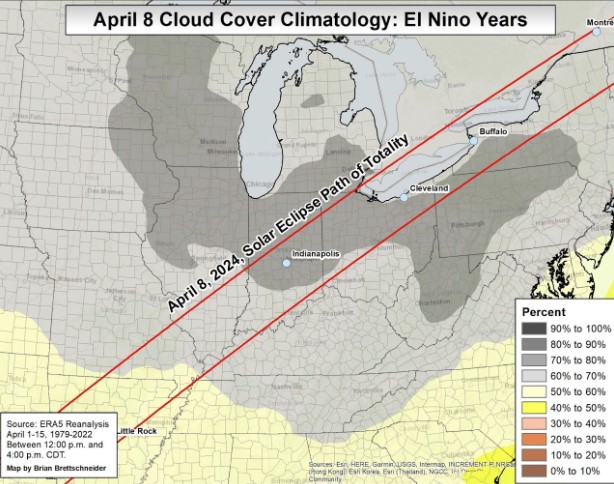 |
|
Cloud cover climatology for April 8th, all years, 1979-2022 Image courtesy Brian Brettschneider, NWS Alaska Region |
Cloud cover climatology for April 8th, El Nino years, 1979-2022 Image courtesy Brian Brettschneider, NWS Alaska Region |
Weatherwise, what can we expect?
NASA's Eclipse Explorer has an interactive mapping of what to expect. It includes a time lapse of the path of totality, specific timings for many locations, as well as what the solar disk will look like in areas that are outside of totality.
A summary for several area cities in central and southeast Illinois is in the images below.

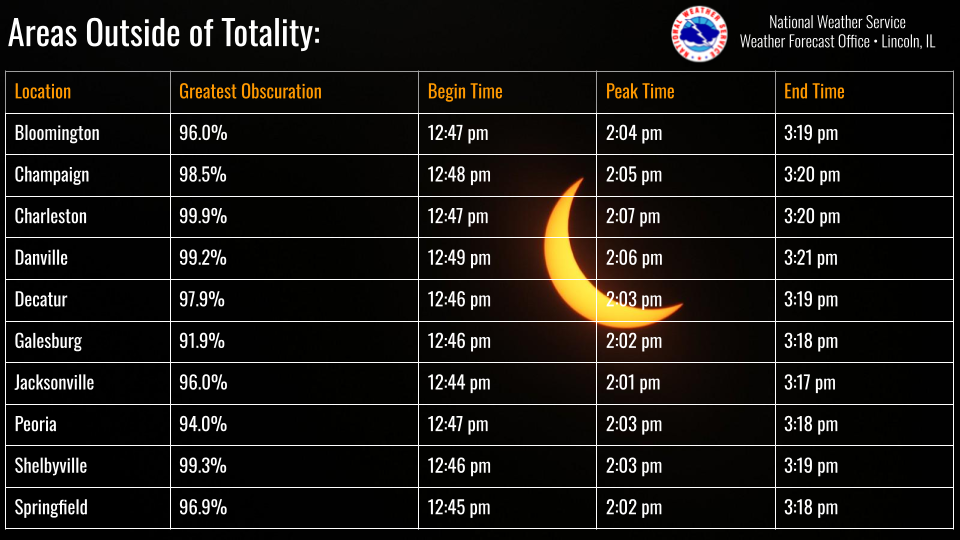
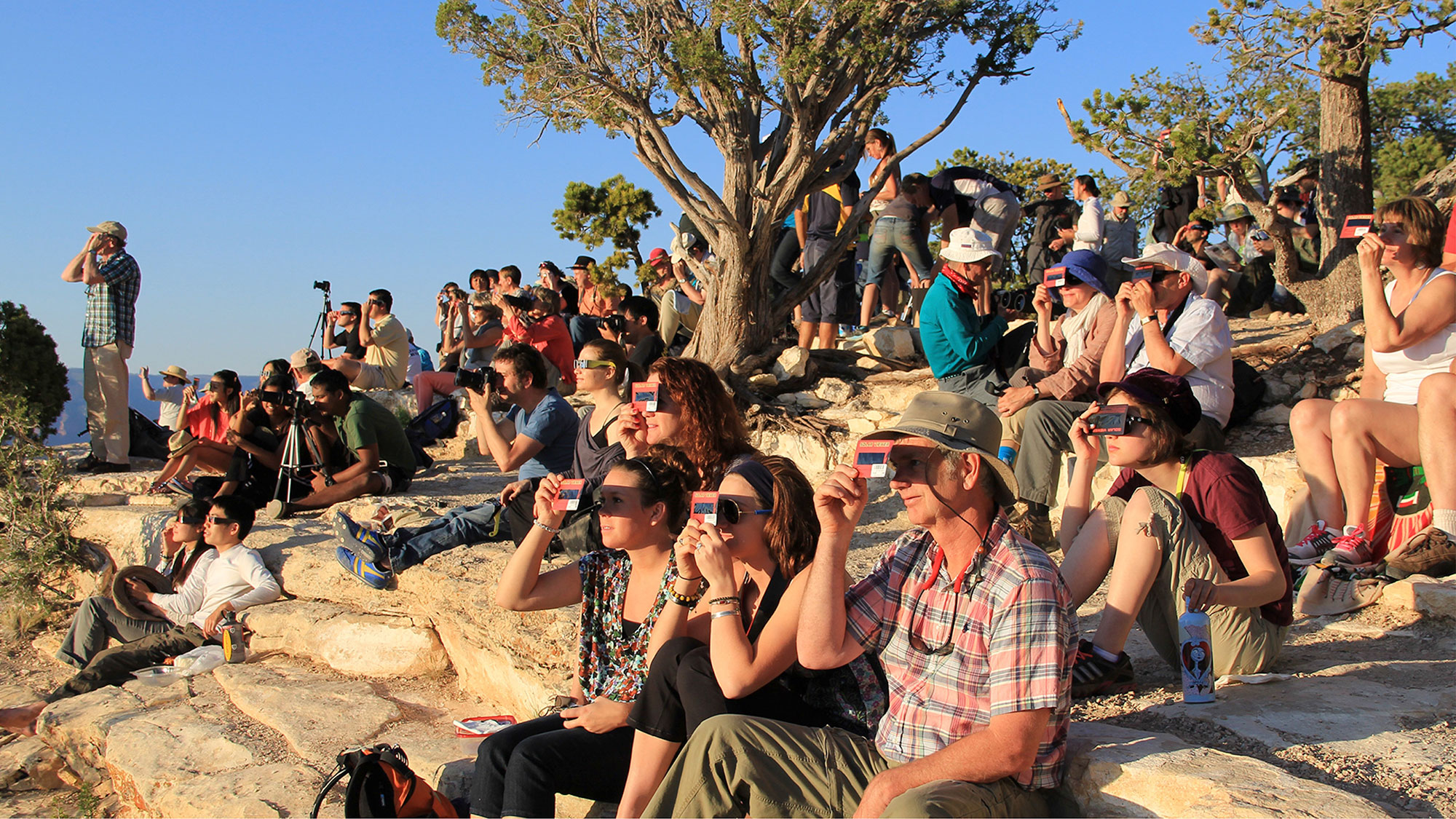
Image courtesy: National Park Service
While viewing a solar eclipse is fun, it is important to stay safe.
Except during the brief total phase of a total solar eclipse, when the Moon completely blocks the Sun’s bright face, it is not safe to look directly at the Sun without specialized eye protection for solar viewing. In addition, using camera lenses, binoculars, or telescopes without special filters will also cause severe eye injury.
Regular sunglasses are not sufficient to view an eclipse. Special solar viewers are thousands of times darker, and should comply with ISO 12312-2 standards. Welding glasses can be used if they are the darkest shade possible (shade 14).
If you're not able to view it directly, indirect methods can also work. For example, you can create your own pinhole projector, look at shadows cast by objects such as colanders, and more.
For more information, visit NASA's Eclipse Safety website at https://science.nasa.gov/eclipses/future-eclipses/eclipse-2024/safety/.
Traffic Information
Traffic will be unusually heavy across the total eclipse path. Be prepared for slow traffic, people pulling over unexpectedly, and pedestrians. The special solar eclipse glasses should not be used while driving.
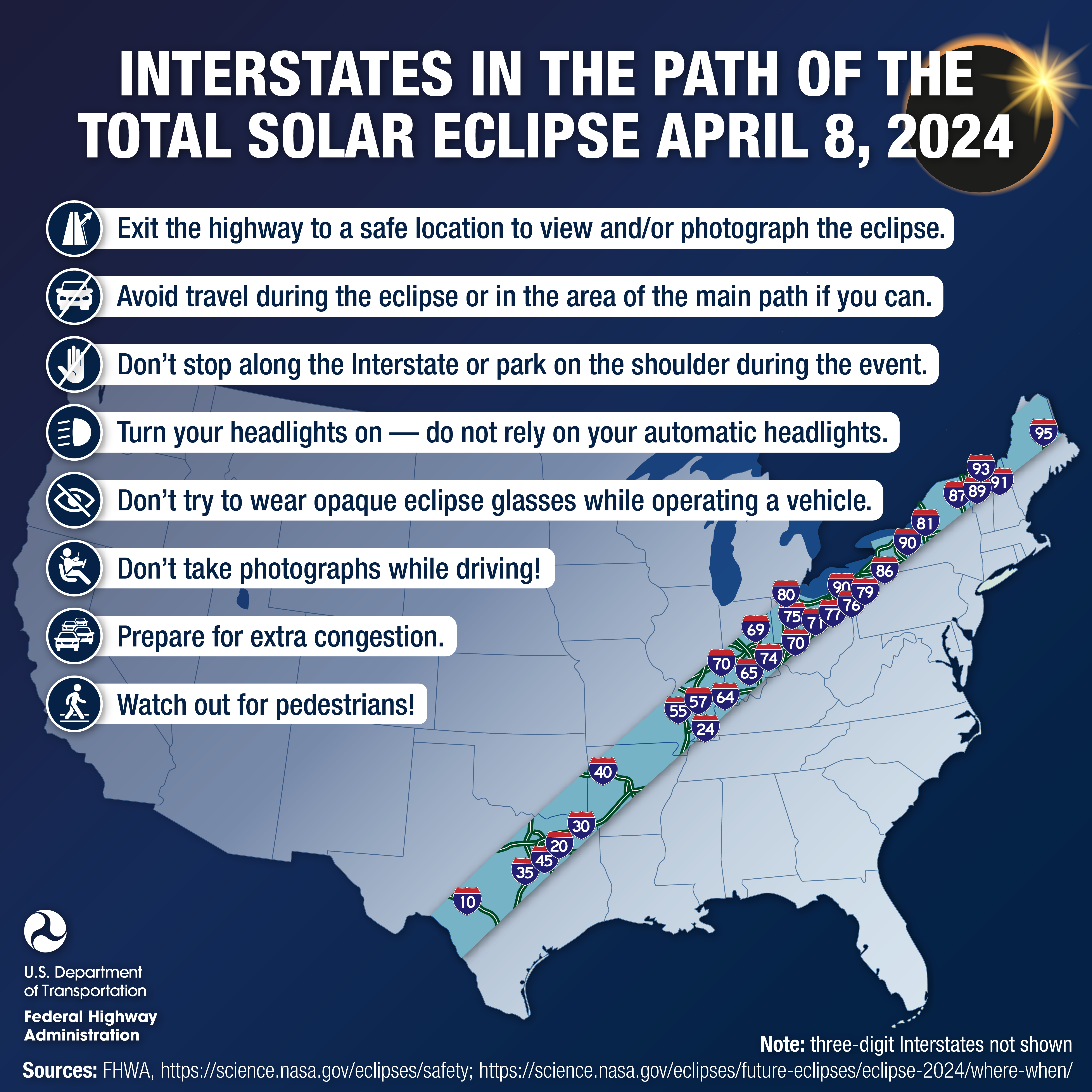
Image courtesy: Federal Highway Administration